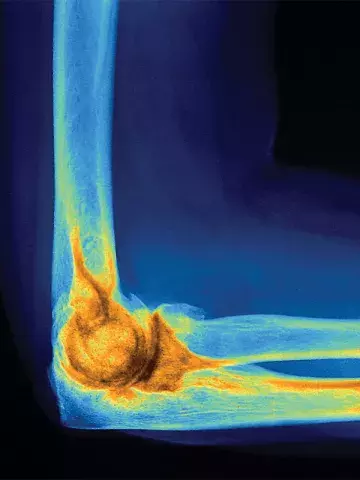Rheumatoid arthritis: improvements in disease activity and remission rates in Australia
By Melanie Hinze
Over the past 12 years, improvements have been seen in rheumatoid arthritis (RA) disease activity and remission rates across Australia, an Australian expert has told Medicine Today.
Adjunct Clinical Professor Geoffrey Littlejohn, Emeritus Director of Rheumatology at Monash Health, Melbourne, was lead author of a study published in Clinical Rheumatology that reported the results of research involving 117 Australian rheumatologists and just over 48,000 patients with RA.
The authors identified patients with a diagnosis of RA and at least three physician visits between 2009 and 2022 from within the OPAL dataset.
Professor Littlejohn told Medicine Today that OPAL Rheumatology is a not-for-profit research company run by rheumatologists and set up to use digital data collected at the time of consultation with patients with rheumatic diseases to identify ways to optimise clinical outcomes.
In their study, the authors examined the patients’ demographics, disease history, prescribed medications and proportions of patients in Disease Activity Score 28-joint count C-reactive protein (DAS28CRP) categories (remission, low disease activity, moderate disease activity and high disease activity).
They identified a consistent and substantial improvement in DAS28CRP remission rates in all patients, increasing from about 50% in 2009 to over 70% by 2022. This was accompanied by reduced proportions of patients in moderate disease activity and high disease activity states.
Professor Littlejohn, who is Deputy Chair of OPAL Rheumatology, Melbourne, said that the research showed, using standard validated clinical measures, that control of RA in Australia had increased significantly over the time-period that OPAL had been collecting data.
‘Measures of low disease activity and remission have improved in patients receiving conventional synthetic, biological and targeted synthetic drugs,’ he said.
Professor Littlejohn noted that over the time of this study there had been many more evidence-based treatments available to patients in Australia with RA, with the treatment ‘toolbox’ now containing subsidised drugs that effectively targeted many different disease mechanisms.
‘This has been associated with a more focused treatment algorithm to achieve better disease control more quickly,’ Professor Littlejohn said, adding that patients were now referred, seen and treated earlier and better.
‘It is expected that this better disease control will be lead to less joint damage, greater patient function and wellbeing and increased patient survival as the inflammatory burden of RA is more effectively treated,’ Professor Littlejohn told Medicine Today.
Clin Rheumatol 2024; https://doi.org/10.1007/s10067-024-06967-8.


